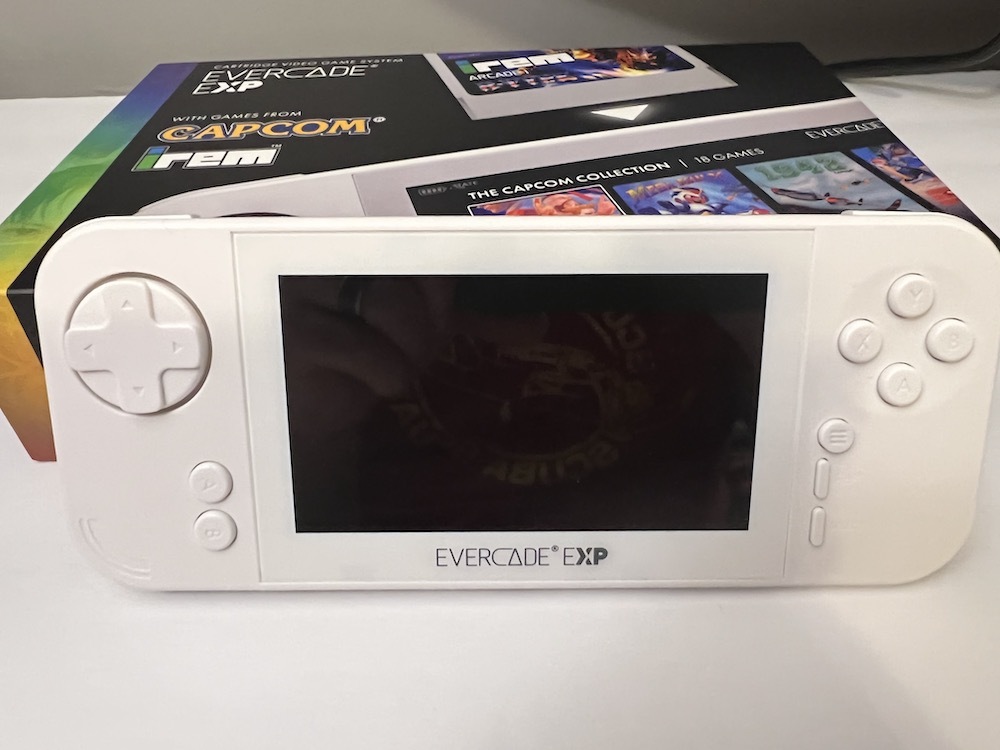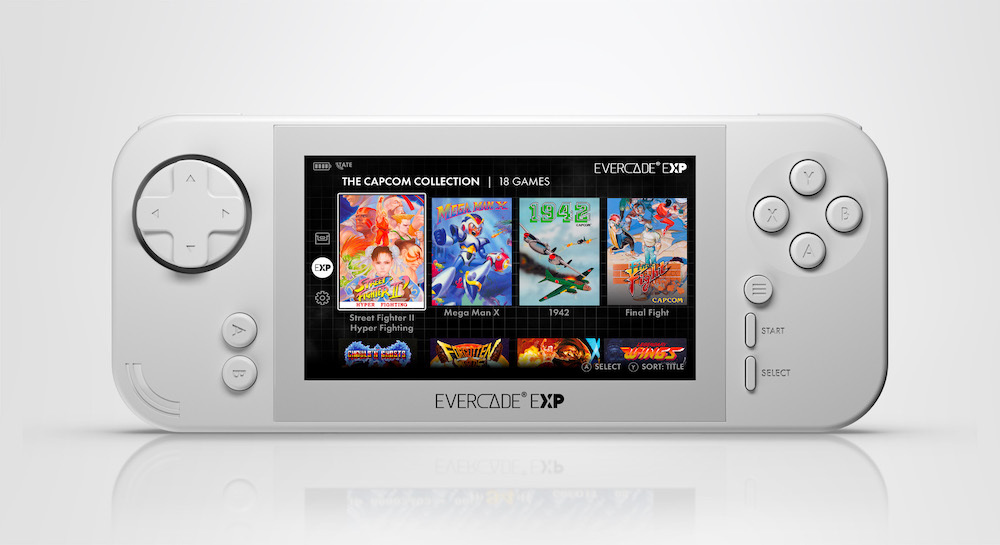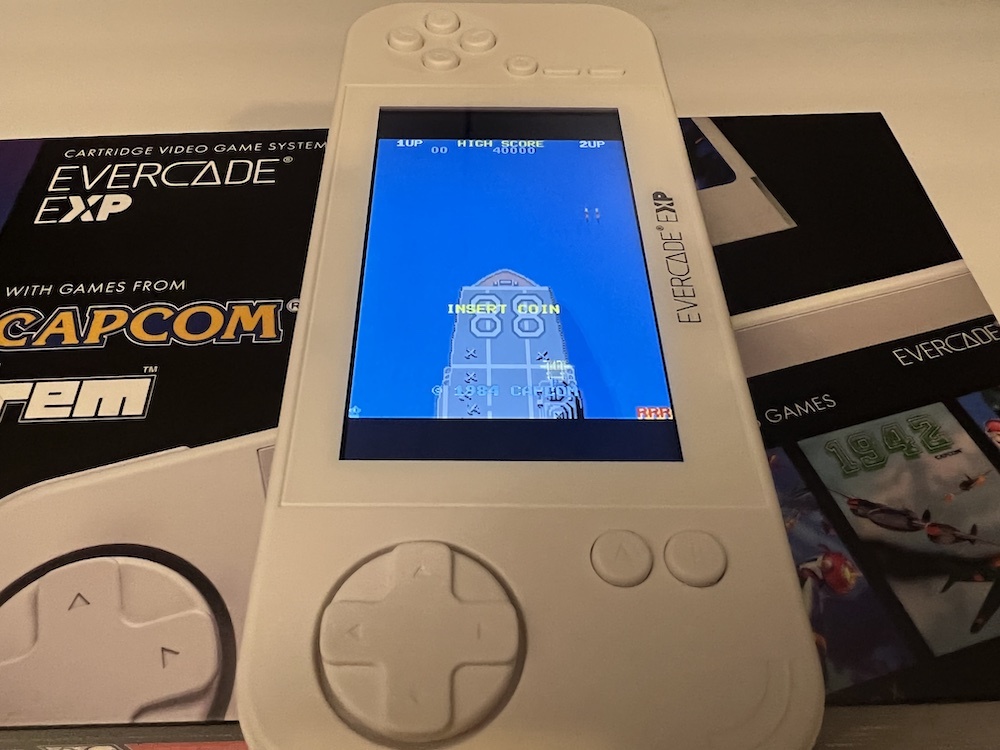This cartridge-based handheld for retro games makes smart improvements to the original Evercade design.
The Evercade EXP, an updated version of the original handheld, is the best Evercade yet.
Each cartridge, which goes for $20 a pop, has a collection of authentic classic games.

Just like the old days, the carts come in chunky plastic cases filled with cool inserts.
You insert the cartridge, pick a game, and dive in almost instantly.
The Evercade EXP comes in an all-white or limited-edition all-black design.

The original had a toy-like appearance, with a somewhat cheap plastic feel and little weight to it.
The EXP, on the other hand, has a more modernized vibe.
It truly is night and day when you switch back and forth between the two handhelds.

The eight-way D-pad has a smoother range of motion.
It’s easily one of the best D-pads I’ve used on a handheld.
You’ll notice bonus A and B buttons on the left side of the handheld.

The Evercade experience is enhanced by the improved display on the EXP.
The increased brightness is noticeable right away.
It’s still the same size at 4.3 inches, but the resolution is significantly improved.
It has an 800 x 480 IPS display versus the 480 x 272 resolution display of the original.
Overall, it has much crisper image quality that makes the 8- and 16-bit games from yesteryear really pop.
Speaking of viewing experience, the EXP’s display has far superior viewing angles.
you might tilt it without obscuring the picture.
And just like the Switch OLED, you’re able to only see these improvements in handheld mode.
you might connect the EXP to an external display using the Mini-HDMI port to run games in 720p.
This is the same “docked” resolution as the original.
The EXP remains a rig for playing classics by yourself.
The biggest general-use change is the move from microUSB to USB-C charging.
The Evercade was the only unit I regularly used that charges via microUSB.
The EXP does not support Bluetooth, which is certainly a bummer.
The custom Linux operating system that the EXP runs borrows from the VS home console.
Once you select a game, you get a top-level description as well as the controls.
you could load your game from your last save to pick up where you left off quickly.
Numerous display themes, sound mixing sliders, and display parameters are available in the menu parameters.
Display parameters let you switch the aspect ratio, add scanlines, and choose bezels.
Original Evercade owners can update their handheld’s firmware to the new OS layout, too.
So, the handheld itself is great, but how about the games?
One of the major selling points of the EXP is its built-in library of 18 Capcom games.
All of them run and look great.
The EXP also comes with a new cartridge collection focused on IREM games.
R-jot down is the big standout here.
The classic shoot-‘em-up still plays well all these years later.
The IREM cart is just one of the dozens of Evercade collections that are available now.
For a full list, check outEvercade’s site.
It’s just a matter if there’senoughgames you want to play.
Though I won’t spoil it, Blaze brought back “hidden” games.
There are five games to unlock via secret passwords and button press combinations.
All told, you’re getting the Evercade EXP handheld and more than two dozen games for $150.
Those who are considering picking up an Evercade for the first time should absolutely go for the EXP.
Throw in the 18 Capcom games and the value gets even better.